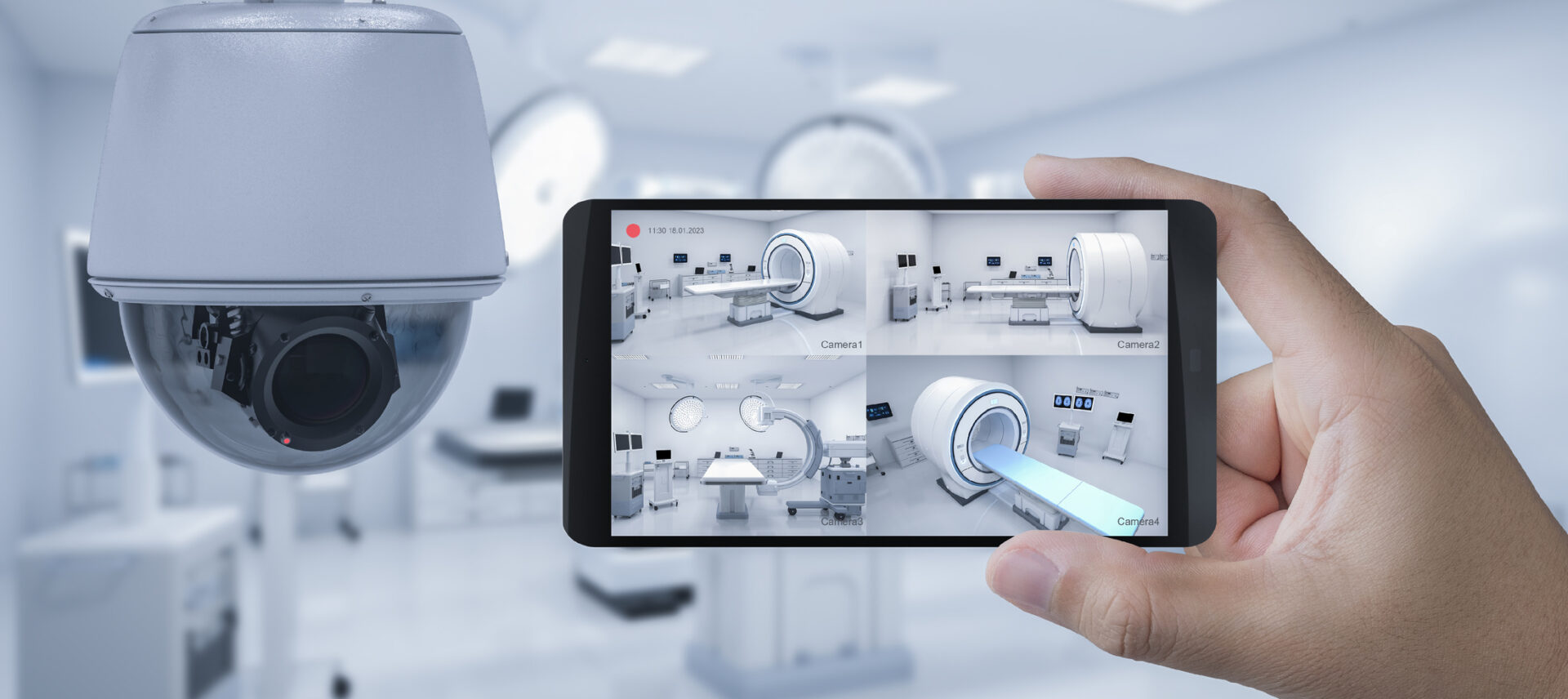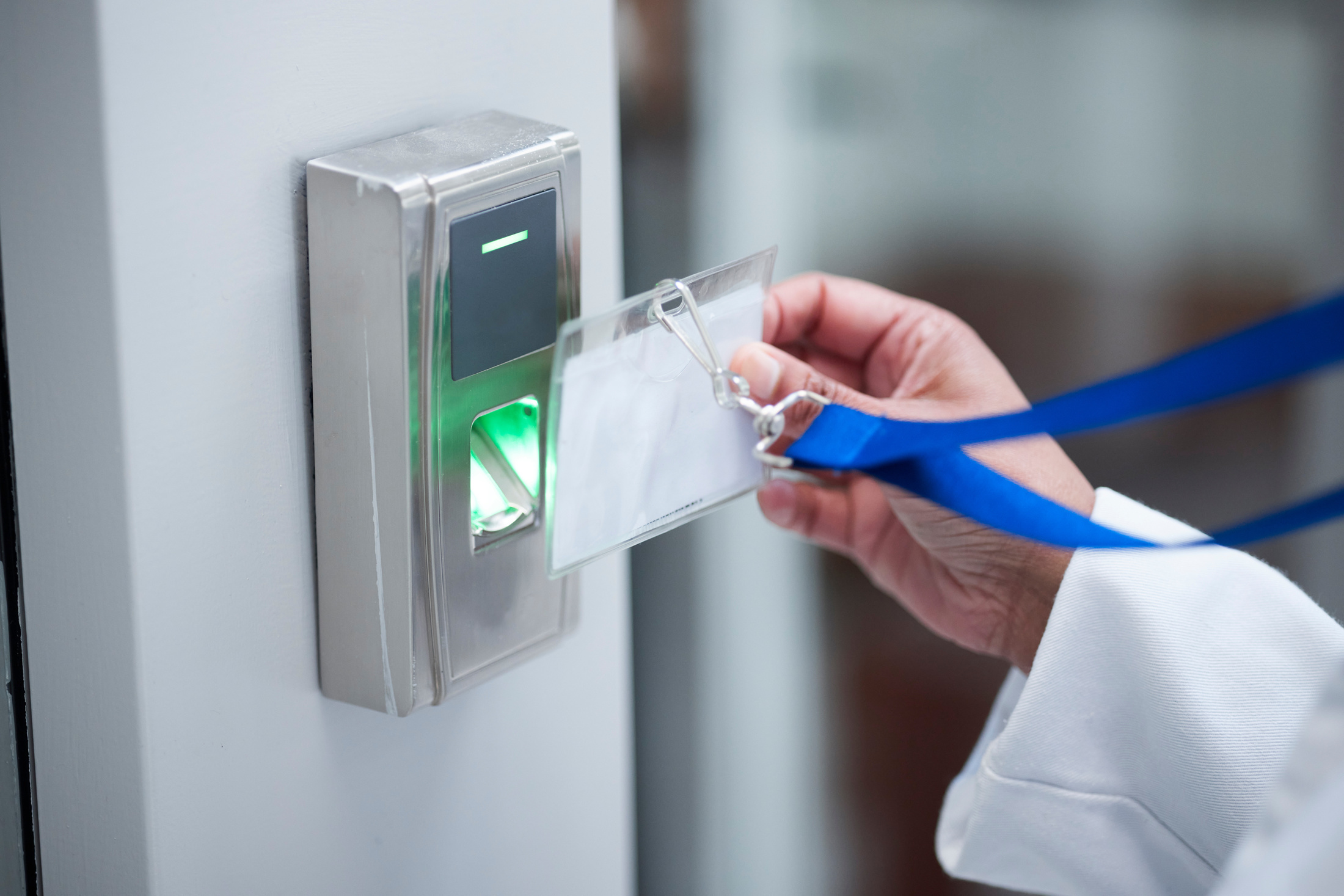News & Insights
Strategic physical security solutions for safer work environments in hospitals
As healthcare facilities face increasing challenges from both external threats and internal vulnerabilities, strategic physical security solutions have become essential in protecting patients, staff, and visitors. In this article, we explore how thoughtfully designed and implemented physical security measures can enhance the overall safety of hospitals, mitigate risks, and create a more secure environment.

With workplace violence emerging as the most significant and pervasive threat faced by staff in healthcare settings, physical security is a paramount concern. Frontline healthcare professionals face an increasing risk of both verbal and physical assaults, ranging from agitated patients to aggressive visitors. While some incidents stem from patients with cognitive or behavioral health conditions, a significant portion of violence targets staff directly and—compromises their ability to deliver care safely and efficiently.
Alarming statistics: the reality of violence in healthcare
The numbers are sobering. According to the American Hospital Association, healthcare workers are five times more likely to encounter workplace violence compared to other industries. Nearly half of all nurses report being victims of physical violence, and 68% experience verbal abuse during their shifts. Emergency departments are particularly high-risk zones, with two out of three emergency physicians assaulted in 2022 alone. Alarmingly, 25% of these professionals face multiple attacks per week.
As these incidents escalate in both frequency and severity, hospitals are increasingly compelled to adopt strategic physical security solutions.

Why physical security in hospitals requires a unique approach
Unlike corporate offices or schools, hospitals operate in highly fluid, unpredictable environments. Physical security in other sectors often revolves around tightly controlling access points, effectively locking down entire buildings. However, this model doesn’t translate well to hospitals where the flow of people—patients, staff, visitors, and vendors—is constant and essential to operations.
With multiple control points ranging from the main entrance to restricted areas like operating rooms or sterile units spread across the facility, hospitals face a unique set of challenges. Security risks extend beyond the immediate threat of violence to encompass issues like drug diversion, patient elopement, and critical incidents such as attempted infant abductions. The complexity of these environments demands security solutions that are both flexible and comprehensive to address a broad spectrum of threats while ensuring healthcare services are not disrupted.
Creating safer environments for both workers patients and visitors requires a multifaceted approach: one that blends advanced technology, intelligent design, and robust procedural measures to mitigate risks and address this growing crisis head-on.
Implementing holistic physical security solutions for hospitals
Hospital administrators are often inundated with pitches for technical security solutions. Creating a safe environment in hospitals requires more than just products or devices: it calls for comprehensive strategies that actively manage risk, control movement, mitigate threats and encourage employee participation. Effective solutions need to be flexible, holistic, and integrated while ensuring the hospital operates smoothly. A holistic approach involves making strides in all of these elements to create a secure environment.
1. Managing movement and access
Most hospitals already leverage layered access strategies that control and monitor who enters specific areas, but what often gets overlooked is the need for dynamic movement management that adapts to changing operational realities. Many hospitals still rely on static, one-size-fits-all access control systems that don’t account for fluctuating risk levels or patient flows. For example, certain areas might need to become temporarily restricted during specific shifts or critical incidents like surges in the ER. Adaptive systems can react in real time, adjusting security levels based on the immediate needs of the hospital rather than fixed policies.
Biometrics is another type of access control that can enhance security. While currently cost-prohibitive to add to every controlled door, they can be a strategic part of access control layering for the most critical areas.
While security systems produce a lot of movement and access data, they aren’t often leveraged. Advanced data analytics can be used to anticipate security risks by monitoring patterns of movement, identifying bottlenecks, and highlighting vulnerable zones where unauthorized access or security breaches are most likely to occur.
2. Enhancing real-time awareness and incident prevention
Surveillance systems are evolving with features like intelligent video analytics, which use AI tools such as facial and license plate recognition to actively provide early notification of known bad actors, triggering notification response protocols. These systems do more than passively record they analyze real-time footage to detect potential risks, like unauthorized access or aggressive behavior, and alert security teams for immediate responses.
Even without advanced AI-driven systems, hospitals can boost their security by ensuring their observation teams are fully staffed and supported by the necessary IT infrastructure. Ensuring that network and system capabilities are not limiting the performance of existing security technology is important for maintaining effectiveness.
Hospital administrators should regularly check in with security teams to understand how their systems are being used. Reviewing details such as video storage capacity, camera placement decisions, and potential system limitations can reveal insights that help optimize risk management strategies and address vulnerabilities.
3. Boosting staff awareness
Even the most advanced security systems can be undermined if staff are unaware of or fail to follow protocols. One of the most common security breaches occurs when doors are propped open for convenience, bypassing access control measures and creating vulnerabilities. Ensuring that staff understand why these protocols exist can significantly reduce these risks.
Another key aspect of hospital security is ensuring that all personnel are well trained in security response protocols and de-escalation techniques. By empowering staff with the skills to recognize warning signs of violence and giving them practice in responding appropriately, hospitals can prevent many situations from escalating into physical confrontations.
Systems designed for duress alerts, infant abduction prevention, and other critical security functions are only as effective as the staff trained to use them. Regular communication, clear signage, and hands-on memorialized training sessions help ensure that every team member is familiar with both the purpose and operation of these systems. This is especially important for healthcare workers who rotate between facilities, as consistent protocols and technologies across locations promote ease of use and ensure that security standards are uniformly maintained.
4. Providing immediate support through emergency communication
Healthcare staff, particularly those in high-stress areas like emergency departments or psychiatric units, often find themselves in situations that escalate quickly. Hospitals must ensure they have emergency communication systems in place that allow for immediate and discreet requests for assistance. The strategic use of panic buttons or mobile alert systems can give staff a direct line to security personnel, significantly reducing the time it takes to respond to violent incidents or other threats.
When combined with hospital-wide emergency communication platforms, these systems allow administrators to communicate critical instructions to staff and coordinate responses during incidents like lockdowns or evacuations.
5. Analyzing security incidents to inform future strategies
To continuously improve security, hospitals must have systems in place to analyze incidents and adjust their strategies accordingly. Incident reporting platforms that allow staff to document and share security breaches or threats help administrators track patterns of violence, identify high-risk areas, and adjust security measures in real time.
This data-driven approach ensures that security protocols remain dynamic and responsive, enabling hospitals to stay ahead of emerging threats and protect both their staff and patients more effectively.
Design measures that enhance physical security without adding operational costs
New construction and renovation projects offer opportunities to leverage layout as a security measure with zero operational costs. By incorporating thoughtful design elements, hospitals can enhance safety without the need for additional equipment or personnel, making these measures highly sustainable over the long term.
One simple yet powerful example is the strategic placement of doors. A door positioned in a way that limits access to certain corridors or departments can prevent unauthorized movement while maintaining easy flow for staff. Poorly positioned doors, on the other hand, can inadvertently connect unrelated areas, increasing the risk of security breaches or unauthorized access. Having a knowledgeable member of your team help implement those changes is a critical factor for success.
Designing for visibility is another key tactic. Clear sightlines in high-risk areas such as waiting rooms, emergency departments, and hallways enable staff and security personnel to spot potential issues before they escalate. Open, well-lit spaces reduce opportunities for violence or misconduct because individuals are less likely to engage in disruptive behavior in environments where they can be easily seen. For example, lighting controls and proper ventilation in a equipment heavy room ensure doors won’t be propped open to maintain temperature and the lights from being turned off to obscure potential theft.
These principles align closely with Crime Prevention Through Environmental Design (CPTED), a proven approach to reducing crime through strategic environmental modifications. CPTED encourages the design of physical spaces in ways that naturally discourage unlawful behavior. The goal is to design hospital spaces that naturally manage and control movement, reducing the need for additional security technologies or staff resources.
Landscaping and external design are also crucial components of security that come with zero operational costs. Fences, natural barriers, and strategically placed lighting outside the healthcare facility can help prevent unauthorized access or loitering near entrances. Even outdoor environments like parking lots can benefit from these design principles, with trees and shrubs kept low to enhance visibility and lighting that discourages unwanted activity after dark.
How can Salas O’Brien help?
Salas O’Brien provides design expertise in all areas of a hospital’s security program with dedicated physical security design experts who specialize in the unique needs of all types of healthcare facilities. We understand that the stakes for hospitals are high, requiring robust and flexible security solutions that can accommodate the unique flow of people while safeguarding patients, staff, and critical resources.
Have questions about physical security solutions for your healthcare facility? Reach out to one of our contributors below.
For media inquiries on this article, reach out to Stacy Lake, Director of Corporate Communications.

Eric Covell, RCDD
Eric Covell is an expert in the design and implementation of engineered communications and information technology systems with over 30 years of experience. These systems include voice and data infrastructure, outside plant, network design, RF distribution, telephony, paging/intercom, and wireless as well as public safety and security systems such as access control, closed-circuit television, and intrusion detection. Eric serves as a Technology Design Principal at Salas O’Brien. Contact him at [email protected] .

Nick Heywood, PMP, CPD
Nick Heywood specializes in a range of low-voltage systems including security electronics, tele-data, fire alarm, and audio-visual systems, with a focus on threat and vulnerability assessments, security master planning, and Division 28 standards. Nick collaborates with the team to offer comprehensive MEP and low-voltage solutions for sectors such as healthcare, education, corporate, and critical infrastructure. Nick serves as an Associate Vice President at Salas O’Brien. Contact him at [email protected].

Eric Scholten
Eric Scholten is a project manager with 31 years of national and global project management, service, and installation expertise in the security industry with 21 years of project management, design, engineering, and client executive experience and 10 years of integrator security system installation experience. His project management talents include system assessments, master planning, design, engineering, AHJ document submission, bid reviews, construction administration, commissioning, and development and startup of international systems and special projects for a wide range of clients. Eric serves as a Vice President at Salas O’Brien. Contact him at [email protected].

Duane Waite
Duane Waite with his 37 years of experience in managing electrical engineering teams combines a hands-on approach with an eye for detail that inspires his team to consistently produce quality work. His commitment to continuing education, mentorship teamed with reliable, efficient communications and information tracking systems has proven greatly advantageous on complex projects like hospitals and pharmaceutical, educational, governmental, and industrial facilities . Duane serves as a Principal at Salas O’Brien and Head of the Electrical Department in Canada. Contact him at [email protected] .